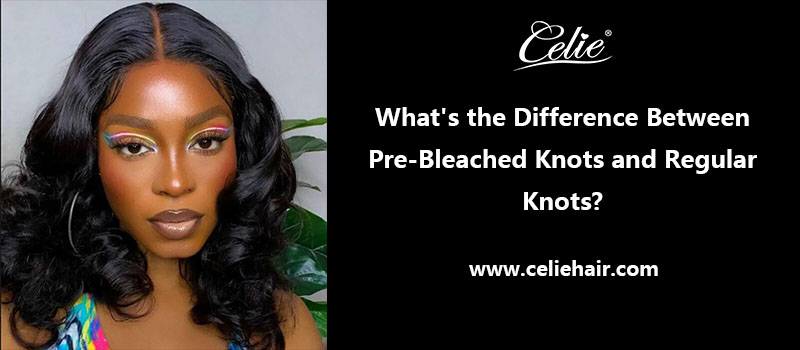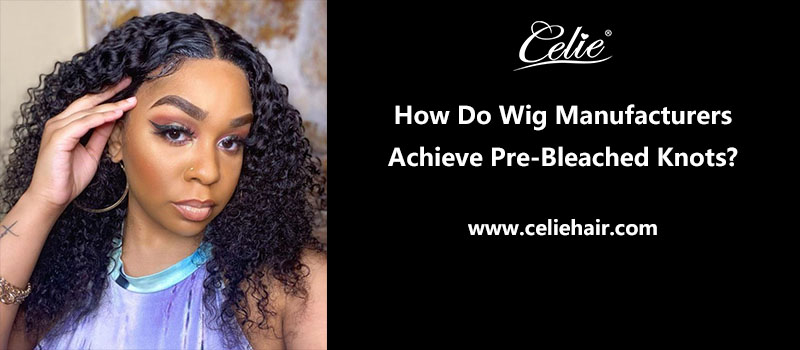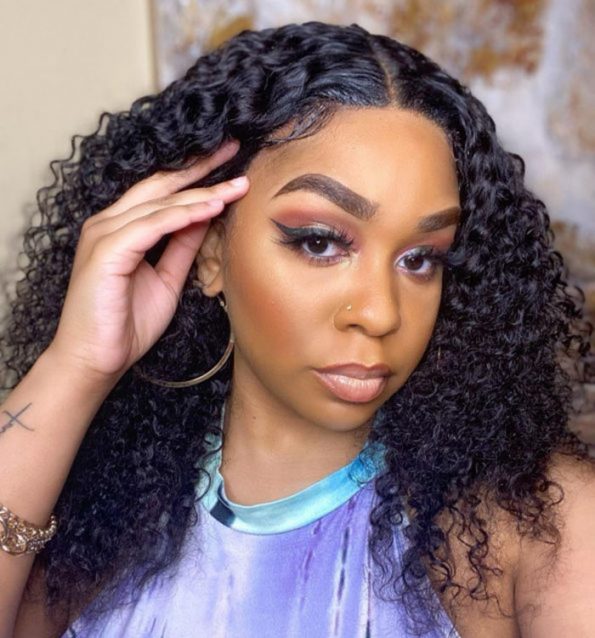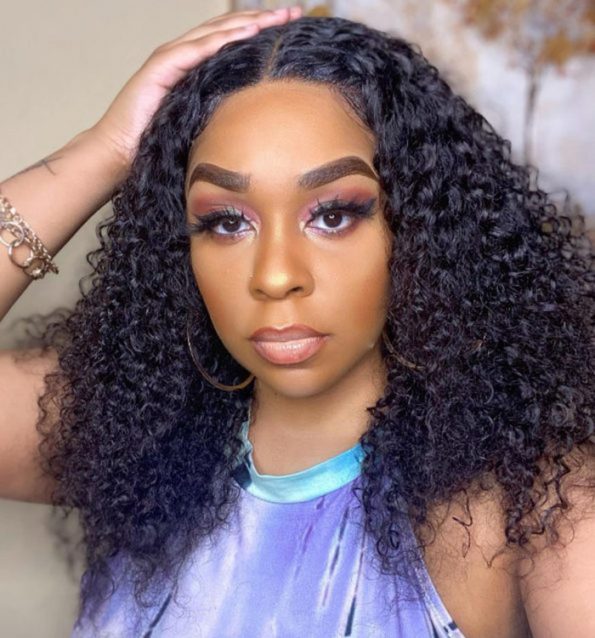When it comes to wigs, hairpieces, and extensions, achieving a natural and undetectable look is paramount. One essential factor in achieving this is the way the hair is ventilated onto the wig cap or base. Knots play a crucial role in this process, and the technique used to bleach these knots can make a significant difference in the final appearance of the hairpiece. In this comprehensive guide, we will delve into the world of knots, specifically examining the differences between pre-bleached knots and regular knots, and how these distinctions impact the overall aesthetics of hairpieces.
Knots in hairpieces: An overview.
Before we dive into the differences between pre-bleached knots and regular knots, let’s establish a basic understanding of what knots are in the context of hairpieces. Knots are tiny clusters of hair strands that are tied or secured to the wig cap or base. These knots are where the hair is attached, and they play a crucial role in determining how natural the hairpiece looks when worn.
Regular knots.
Regular knots are typically unprocessed knots that come as they are when the hair is ventilated onto the wig cap. These knots are dark in color and can be easily noticeable when the hair is parted or styled in a way that exposes the base of the hairpiece. They resemble tiny dark dots on the scalp or hairline, which can make it apparent that the person is wearing a wig or hairpiece.
Pre-bleached knots.
On the other hand, pre-bleached knots refer to knots that have undergone a bleaching process before the hairpiece is completed. During this process, the knots are lightened to match the wearer’s skin tone, making them less conspicuous when the hair is parted or styled. Pre-bleached knots aim to create a more natural and realistic appearance by reducing the contrast between the knots and the scalp.
The key differences.
Now that we have a foundational understanding of knots, let’s explore the key differences between pre-bleached knots and regular knots in more detail.
- Knot color.
The most apparent difference between pre-bleached knots and regular knots is the color. Regular knots are typically dark in color, often resembling the color of the hair strands themselves. In contrast, pre-bleached knots are lightened to match the wearer’s skin tone, making them significantly less noticeable.
- Natural appearance.
Pre-bleached knots are designed to create a more natural appearance when the hair is parted or styled. The lightened knots blend seamlessly with the scalp, reducing the “wiggy” look that can be associated with regular knots. This natural appearance is particularly important for those who want their hairpieces to be undetectable.
- Customization.
Pre-bleached knots offer a level of customization that regular knots do not. With pre-bleached knots, the manufacturer or wig stylist can adjust the level of bleaching to match the wearer’s specific skin tone. This customization ensures that the knots blend harmoniously with the individual’s complexion, further enhancing the realism of the hairpiece.
- Time and effort.
Creating pre-bleached knots requires an additional step in the manufacturing or wig-making process. The knots must be carefully bleached to achieve the desired color and level of concealment. This added step can make pre-bleached knot wigs slightly more time-consuming and labor-intensive to produce compared to wigs with regular knots.
- Cost.
Due to the extra time, effort, and customization involved in creating pre-bleached knots, these wigs or hairpieces tend to be more expensive than their counterparts with regular knots. The increased cost reflects the improved aesthetics and natural appearance that pre-bleached knots offer.
Choosing between pre-bleached knots and regular knots.
The choice between pre-bleached knots and regular knots ultimately comes down to personal preference and priorities. Here are some factors to consider when making your decision:
- Budget.
If budget is a significant concern, regular knot wigs or hairpieces may be a more economical choice. They are generally more affordable than their pre-bleached knot counterparts.
- Realism.
If achieving a natural and realistic look is your top priority, pre-bleached knots are the way to go. They are designed to mimic the appearance of a real scalp and are less likely to be detected, even in close proximity.
- Skin tone.
Consider your skin tone and how closely the pre-bleached knots match it. Customization options can ensure a close match, but it’s essential to discuss your specific needs with the wig manufacturer or stylist.
- Maintenance.
Keep in mind that pre-bleached knots may require slightly more maintenance to maintain their appearance over time. Regular knot wigs are generally easier to care for in this regard.
- Occasion.
Think about the occasions and settings in which you plan to wear the wig or hairpiece. For everyday use or formal events where a natural look is crucial, pre-bleached knots may be the better choice. However, for occasional use or situations where budget constraints apply, regular knots may suffice.
Can I bleach wig by myself at home?
Bleaching wig knots at home is a common practice to make lace wigs, closures, or frontals appear more natural. These knots are the tiny clusters of hair tied to the lace base, and they can be quite noticeable due to their dark color. Bleaching the knots helps to lighten them, making them less visible against the wearer’s scalp. Here’s a step-by-step guide on how to bleach wig knots at home:
Materials you’ll need:
Bleach: Use a high-quality hair bleach powder and developer. Choose a lower volume developer (around 20 or 30 volume) to minimize damage.
Mixing bowl and brush: For preparing and applying the bleach.
Gloves: To protect your hands.
Wig: Ensure it’s a lace wig or closure/frontal made of human hair or heat-resistant synthetic fiber.
Plastic wrap or foil: To cover the wig during processing.
Toner (Optional): To adjust the color after bleaching.
Steps to bleach wig knots:
Prepare your workspace: Choose a well-ventilated area and cover your workspace with newspaper or a disposable tablecloth to catch any spills.
Wear protective gear: Put on gloves to protect your hands and avoid skin contact with the bleach.
Mix the bleach: Follow the instructions on the bleach product for mixing. Typically, you’ll combine the bleach powder and developer in a 1:2 ratio. Mix until you achieve a smooth, creamy consistency.
Test strand: Before applying the bleach to the entire wig, it’s advisable to perform a strand test on a small, inconspicuous section of the wig. This will help you determine the processing time needed and ensure the bleach doesn’t damage the hair or lace.
Apply the bleach: Using a brush, apply the bleach evenly to the lace in the area where the knots are located. Be cautious not to oversaturate the lace, as this can cause excessive damage.
Cover and process: After applying the bleach, cover the lace with plastic wrap or foil to keep the bleach moist. The processing time may vary based on the hair type and your desired level of lightening. Check the wig regularly to monitor the color change.
Rinse and shampoo: Once the knots reach the desired level of lightness, rinse the bleach out thoroughly with cold water to stop the bleaching process. Use a mild shampoo to remove any remaining bleach residue. Be gentle while washing to avoid damaging the lace.
Condition: Apply a quality wig conditioner to the hair to restore moisture and softness. Leave it on for a few minutes before rinsing.
Tone (Optional): If you want to adjust the tone of the lace, you can apply a toner according to the manufacturer’s instructions. This can help neutralize any unwanted brassy or yellow tones.
Air dry: Allow the wig to air dry on a wig stand or mannequin head. Avoid using heat styling tools immediately after bleaching, as the hair and lace may be more fragile.
Important tips:
Do a strand test: Always perform a strand test before bleaching the entire lace to ensure the desired results and avoid damage.
Use a timer: Keep a close eye on the lace during processing, and use a timer to ensure you don’t over-bleach the knots.
Protect the hair: While bleaching the knots, make sure to avoid getting bleach on the hair itself, as it can damage the hair fibers.
Consult a professional: If you’re uncertain about any aspect of the process, or if you have a valuable wig, consider seeking the help of a professional hairstylist or wig specialist.
You can get one try it.
In the world of wigs, hairpieces, and extensions, the choice between pre-bleached knots and regular knots can significantly impact the overall appearance and realism of the hairpiece. Pre-bleached knots offer a more natural look by matching the color of the knots to the wearer’s skin tone, while regular knots are more budget-friendly but may be more noticeable.
Ultimately, the decision should be based on your individual preferences, priorities, and budget. Whether you choose pre-bleached knots or regular knots, the key to a successful and convincing hairpiece lies in proper maintenance, styling, and, most importantly, confidence in your chosen look. With the right choice and care, your wig or hairpiece can help you achieve the beautiful, natural look you desire.




